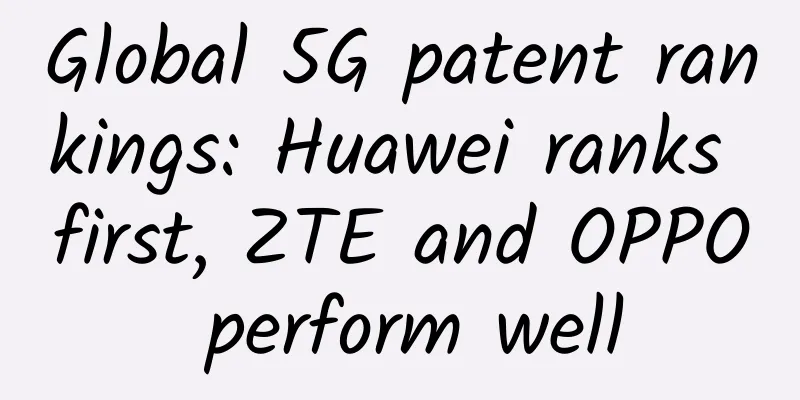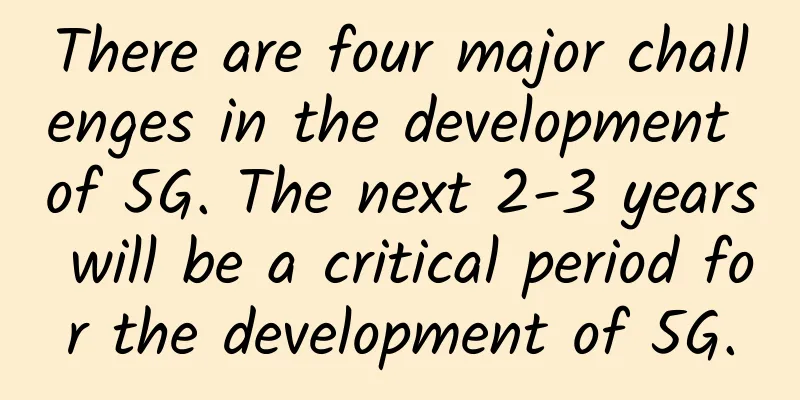Global 5G patent rankings: Huawei ranks first, ZTE and OPPO perform well

|
5G technology has been around for more than four years, and the first 5G mobile phone was launched in April 2019, but to this day most people in the world still cannot enjoy 5G networks. According to Ericsson, by the end of 2022, only 35% of the world's population will be covered by 5G, and this number will rise to 85% by 2028. With the popularization of 5G, the number of 5G standard essential patents (SEPs) continues to increase, and the value of patents is also rising. In recent years, 5G patents have shown signs of a blowout. According to information disclosed by LexisNexis, as of July 2023, there are 131 independent 5G patent "holders" in the world, compared with only 32 in 2015. All companies have obtained more than 60,000 5G patents worldwide, with more than 30,000 in Europe and the United States. 5G patents are increasing by about 5,000 per year. The top ten companies account for 76% of all patents. Although the giants have obvious advantages, 5G patents are showing a fragmented trend. When making the 5G patent rankings, LexisNexis conducted analysis according to three different categories, producing three different lists and one comprehensive ranking list. TOP10 list In the first list, LexisNexis referred to the patent authorization information of the European Patent Office and the States Patent and Trademark Office. Huawei ranked first, followed by Qualcomm, Samsung, LG, Nokia, Ericsson, ZTE, and OPPO. ZTE and OPPO shared the seventh place. Apple, MediaTek, Xiaomi, Sony, and Intel also made it into the top 20. If the PAI (Patent Asset Index) is taken into account, the ranking will change significantly. PAI values the quality of patents, and some patents are of low value. If PAI is taken into account, a second list is produced. In this list, Huawei's ranking drops behind Qualcomm and Samsung. LG ranks fourth and Nokia ranks seventh. InterDigital of the United States rises from 14th to 5th in the previous list, OPPO drops from 7th to 12th, Asus rises from 22nd to 15th, BlackBerry rises from 34th to 23rd, Kyocera drops from 27th to 36th, Deutsche Telekom drops from 41st to 53rd, Langbo drops from 24th to 40th, Cisco drops from 56th to 45th, Brevet Capital drops from 45th to 33rd, and Orage drops from 56th to 74th. TOP11-30 list According to the report, after taking PAI into account, some companies have dropped from high to low positions, mainly because although the number of 5G patents obtained by the companies is large, the PAI is lower. The report believes that only about 10-20% of the 5G patents that have been applied for are truly "basic" patents. In the third list, the report takes into account the contribution of companies to 3GPP, which is the one that developed the 5G standard. In this ranking, Huawei, Ericsson, Nokia, Qualcomm, and Samsung ranked in the top five. In the first two lists, Intel ranked 20th and 21st respectively, but in this list it ranked 7th, behind ZTE. TOP31-50 list Combining the three lists, we can get a comprehensive ranking, with Huawei ranking first, followed by Qualcomm, Samsung, Ericsson, Nokia, LG, ZTE, OPPO, NTT, and InterDigital, which occupy the top 10. Among the top 50 companies, there are 12 Chinese companies on the list, 10 from the United States, 7 from Japan, 6 from South Korea, and 6 from Taiwan, China. There are also two companies from the Netherlands and Germany, and one company each from Sweden, Finland, France, Canada, and Ireland is in the top 50. Among all 5G standard basic patents, Chinese companies account for 48% of the share. China has granted more than 26,000 5G patents, the US Patent and Trademark Office has granted 28,000, and Europe has granted 15,000. Please note that some companies have obtained authorizations in different countries and regions using the same technology. China, the United States, Europe, Japan, and South Korea are the "Big Five" in 5G patents, with a total of 41,000 5G patents. (Xiaodao) |
>>: Five things you need to know about edge computing
Recommend
The Internet of Things in the 5G Era
The government envisions making India a $5 trilli...
Juniper Networks will aggressively enter the OTT market in 2018, connecting the world with secure and efficient networks
[51CTO.com original article] From June 7 to 8, 20...
Machine learning will be an indispensable future for the development of the Internet of Things
In recent years, there is nothing like machine le...
The Ministry of Industry and Information Technology has made it clear that the SA function will be turned on by default for new 5G mobile phones
5G mobile phones are divided into NSA and SA dual...
5G vs. WiFi 6: Tips for choosing the best wireless network option
There has been much to prove about 5G’s theoretic...
We cannot allow "free-network tools" to threaten network information security
Recently, the official website of the Ministry of...
China Mobile completes R16 version 2.6G+700M SUL uplink enhancement test
Recently, China Mobile and MediaTek completed the...
New infrastructure defines the new connotation of data center
At this year's National People's Congress...
How can operators gain a foothold in the 5G terminal market?
The release of mobile phones has always been very...
A great tool for front-end engineers - Puppeteer
[[423414]] This article mainly talks about puppet...
Top 10 economic predictions for the tech industry in 2024
As we stand on the cusp of a new year, the tech i...
Ruijie Networks: Continue to Lead, "Our Journey Is to the Stars and the Sea"
[51CTO.com original article] As cloud desktop tec...
A "versatile" network tool - Access Control List (ACL)
Peripheral routers, firewalls, and internal route...
After 5G technology, there may not be 6G base stations! Why do you say that?
When the 4G technology standards were announced, ...
The momentum of large-scale commercial use of NB-IoT is unstoppable
The Internet of Things is the only way to the int...








![[6.18] Megalayer flash sale: Hong Kong independent server starts from 199 yuan/month, high-defense server starts from 299 yuan/month](/upload/images/67cabe62b75a5.webp)
